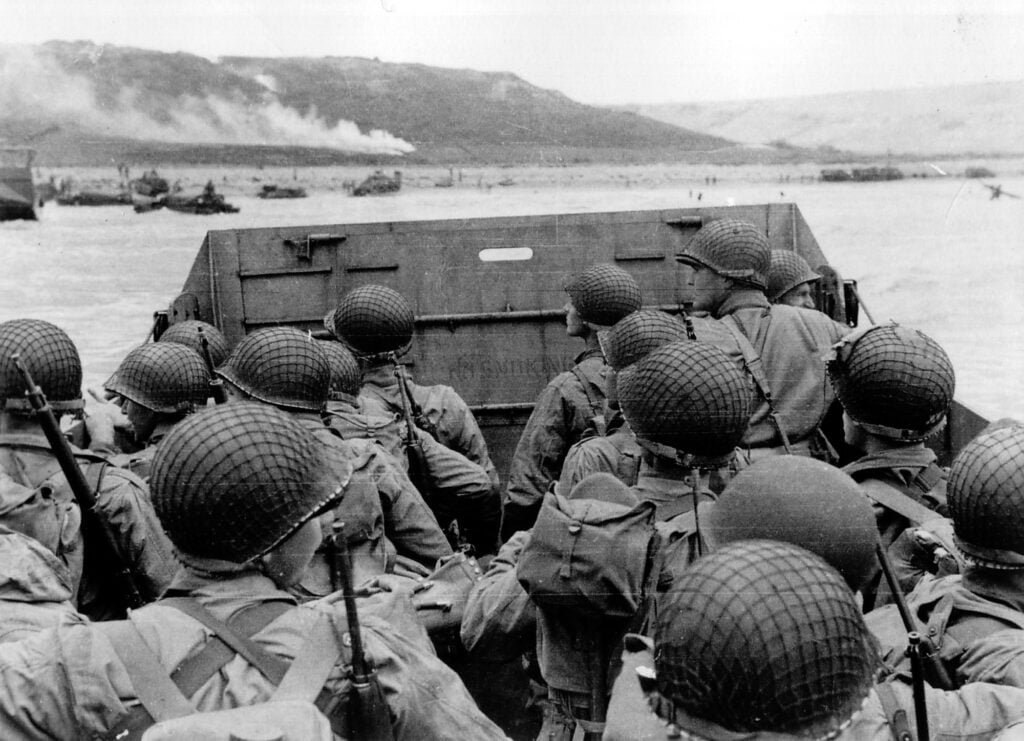Most landing craft used on D-Day were designed to be driven ashore onto a beach, and then withdraw after unloading the troops, vehicles or supplies carried on board. Many different types of landing craft were used in the Normandy campaign. Generally, the smaller types of craft were used earlier on D-Day. In the event that the landing craft was hit by enemy fire, this meant that troops were dispersed between multiple vessels and in the worst case scenario would not all be lost at once. You can read about the different types of amphibious craft here.

Above: A famous image from D-Day: US troops on board an LCVP bound for Easy Red sector of Omaha Beach. (Photo: Conseil Régional de Basse-Normandie / US National Archives)
The smaller craft that landed the assault troops mostly crossed from the United Kingdom on board larger landing ships. As well as being large and vulnerable targets, these ships could not land troops on a beach, so the smaller craft were essential.
Some types of landing craft were not designed to land on a beach and had support or control functions. These included craft which supported the landings by firing on enemy defences from close in to the beach. One example is the rocket-firing LCT(R).
The wartime British convention was to refer to major and minor landing craft types, which were known to the US Navy as landing boats (or small boats) and landing craft. Minor landing craft did not have accommodation on board for the crew. They would often be hoisted onto a larger vessel in normal use, or at least relied on a depot ship when operating off an enemy coast for long periods.
Major landing craft usually did have crew accommodation, even though it was often very basic, and were distinguished from ships by being under 200 feet in length.
There are also a variety of vessels that are sometimes included in the term ‘landing craft’ even though strictly speaking they were not. These included landing ships, which were larger, ocean-going vessels like the Landing Ship, Infantry (a troop transport ship, known to the US as an APA or Auxiliary Personnel, Attack) or Landing Ship, Tank (a ship equipped with a bow door and two decks for vehicles, which could carry up to 55 vehicles including 20 Sherman tanks).
Smaller landing craft are sometimes referred to as ‘landing barges’, but in official terminology landing barges were converted from civilian use and were not used in an assault role, whereas landing craft were designed for that purpose.